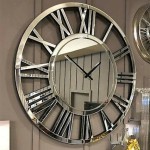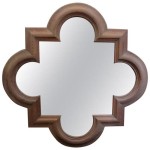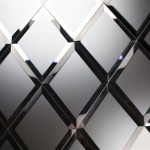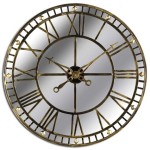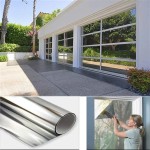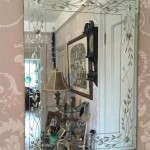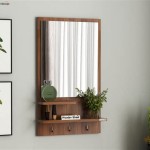Curved Mirrors in Car Headlights
Car headlights are critical for safe nighttime driving, providing illumination for the driver to see the road ahead and making the vehicle visible to other road users. The effective projection of light relies heavily on the design and construction of the headlight assembly, with curved mirrors playing a crucial role in shaping and directing the light beam. Understanding the principles behind these curved mirrors and their application in headlight technology provides valuable insight into automotive lighting systems.
The curved mirrors used in car headlights are examples of reflectors, specifically, parabolic reflectors. A parabola is a specific type of curve with a distinct mathematical definition. When a light source is placed at the focal point of a parabolic reflector, the light rays emitted are reflected parallel to the axis of the parabola. This property is fundamental to the functionality of car headlights, allowing for a concentrated and directed beam of light.
The precise shape and size of the parabolic reflector determine the characteristics of the resulting light beam. A wider parabola will produce a wider beam, while a narrower parabola will generate a more focused beam. Headlight designers carefully consider these factors to balance the need for both broad illumination and focused reach. The reflector's surface must be highly reflective to minimize light loss and maximize the output intensity.
Traditionally, car headlights utilized glass parabolic reflectors with a reflective coating applied to the inner surface. Advances in materials science have led to the adoption of lightweight and durable plastics for reflector construction. These plastic reflectors are typically coated with a thin layer of aluminum or other highly reflective material to achieve the desired reflectivity. The precise application of the reflective coating is critical to ensuring the mirror's performance.
Headlight design involves more than just the parabolic reflector. The light source itself plays a significant role in the overall system performance. Early headlights used incandescent bulbs, which produce light through the heating of a filament. Halogen bulbs, an improvement on incandescent technology, offer increased brightness and efficiency. More recently, high-intensity discharge (HID) and light-emitting diode (LED) technologies have gained prominence due to their even higher efficiency and longer lifespan.
The interaction between the light source and the reflector is critical for optimal headlight performance. The light source must be positioned precisely at the focal point of the parabolic reflector to ensure the reflected rays are parallel. Any deviation from this ideal position will result in a less focused and potentially less effective beam. Headlight assemblies are designed with precise mounting points and adjustments to allow for accurate positioning of the light source.
Different headlight designs employ variations on the basic parabolic reflector principle to achieve specific light distribution patterns. Some headlights incorporate complex reflector shapes with multiple facets or curves to create both low and high beam patterns. Projector-beam headlights utilize a lens in conjunction with the reflector to further shape and control the light beam. These projector lenses can create sharper cutoff lines, reducing glare for oncoming drivers.
Regulations govern the permissible light output and distribution patterns of car headlights. These regulations ensure that headlights provide adequate illumination without causing excessive glare that could blind other drivers. Headlight designs must comply with these regulations to be road legal. Testing procedures verify that headlight assemblies meet the required standards for light intensity, beam pattern, and color temperature.
Advancements in headlight technology continue to improve visibility and driving safety. Adaptive front lighting systems (AFS) use sensors and actuators to adjust the direction of the headlight beam based on steering input and vehicle speed, providing enhanced illumination in curves. Matrix LED headlights utilize individually controllable LEDs to create dynamic beam patterns, automatically dimming sections of the beam to avoid dazzling oncoming traffic while maintaining illumination in other areas.
The development of laser-based headlights represents a further advancement in automotive lighting technology. Laser headlights offer significantly higher light intensity and greater range compared to traditional light sources. However, the high intensity of the laser light requires careful management to prevent glare and ensure safety. Sophisticated optical systems are used to shape and control the laser beam, ensuring compliance with safety regulations.
The curved mirrors within car headlights, specifically the parabolic reflectors, are essential components in the effective projection of light for nighttime driving. From the precise shaping of the reflector to the careful positioning of the light source, each element contributes to the overall performance of the headlight assembly. Ongoing advancements in lighting technology and design continue to enhance visibility and safety on the road.

Car Headlights
Flashlights And Car Headlights All Have Concave Mirrors Why Would It Not Be A Good Idea To Use Convex Mirror Instead Quora

How A Concave Mirror Is Used In Headlights And Searchlights To Throw Light At Long Distance Homework Study Com

Why Headlights Used Concave Mirror

Which Mirror Is Used In The Headlights Of A Car

Concave Vs Convex Mirrors In Cars

Why Headlights Used Concave Mirror

Car Headlight Bulbs Explained Which Land Rover Headlights Sports Cars Luxury

Spherical Mirror Structure Types Terminologies

Why Are Concave Mirrors Used In Headlights Socratic

